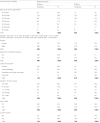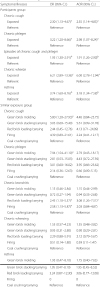1. GEFONT. Nepal: Labour Under the Chimney–A Study on the Brick Kilns of Nepal. 2007. Putalisadak, Kathmandu: General Federation of Nepalese Trade Unions (GEFONT).
2. Pariyar SK, Das T, Ferdous T. Environment And Health Impact For Brick Kilns In Kathmandu Valley. Int J Sci Technol Res. 2013; 2(5):184–187.
3. Haack BN, Khatiwada G. Rice and bricks: environmental issues and mapping of the unusual crop rotation pattern in the Kathmandu Valley, Nepal. Environ Manag. 2007; 39(6):774–782. DOI:
10.1007/s00267-006-0167-0.
4. Bajracharya SB. The Thermal Performance of Traditional Residential Buildings in Kathmandu Valley. J Inst Eng. 2015; 10(1):172–183.
5. Chaulagain H, Rodrigues H, Silva V, Spacone E, Varum H. Earthquake loss estimation for the Kathmandu Valley. Bulletin of Earthquake Engineering. 2016;14(1):59-88.
6. Segupta U, Bhattarai Upadhyay V. Lost in transition? Emerging forms of residential architecture in Kathmandu. Cities. 2016; 52:94–102. DOI:
10.1016/j.cities.2015.11.007.
7. Giri D, Murthy KV, Adhikary PR, Khanal SN. Ambient air quality of Kathmandu valley as reflected by atmospheric particulate matter concentrations (PM10). International Journal of Environmental Science & Technology. 2006;3(4):403-10.
8. Environmental and Public Health Organization (ENPHO). A study on status of brick industry in the Kathmandu Valley. 2001. Kathmandu: Environmental and Public Health Organization.
9. Maskey Manandhar U, Dangol SB. Study on Evaluating Energy Conservation Potential of Brick Production in SAARC Countries: A Report on Nepal. 2013. Nepal: MinErgy.
10. Jha PK, Lekhak HD. Air Pollution Studies and Management Efforts in Nepal. Pure Appl Geophys. 2003; 160:341–348. DOI:
10.1007/s00024-003-8782-7.
11. Joshi SK, Dudani I. Environmental health effects of brick kilns in Kathmandu valley. Kathmandu Univ Med J. 2008;6(21):3–11.
12. Raut AK. Brick Kilns in Kathmandu Valley: Current status, environmental impacts and future options. Himal J Sci. 2003; 1(1):59–61.
13. Fatima I. Impact of Brick Kiln Emissions on the Ambient Air Quality and Vegetation: A Case Study of District Budgam. 2011. Srinagar: The University of Kashmir.
14. Darain KM, Rahman ABM, Ahsan A, Islam ABMS, Yusuf B. Brick Making Practice in Bangladesh: A Review of Energy Efficiency and Air Pollution Scenarios. J Hydro Environ Res. 2013; 1(1):60–69.
15. Guttikunda SK, Begum BA, Wadud Z. Particulate pollution from brick kiln clusters in the Greater Dhaka region, Bangladesh. Air Qual Atmos Health. 2012.
16. Hussan A, Bhat GA, Sheikh MA. Impact of Brick Kiln and Vehicular Emissions on Lichen Diversity in Khanabal Area of Anantnag District (J&K), India. Int Res J Environ Sci. 2013; 2(4):30–33.
17. Ghimire H. An Assessment of the Environmental Problems in the Kathmandu Valley of Nepal. 2008. Oxford: Miami University.
18. Raza A, Qamer MF, Afsheen S, Adnan M, Naeem S, Atiq M. Particulate Matter Associated Lung Function Decline in Brick Kiln Workers of Jalalpur Jattan, Pakistan. Pak J Zool. 2014; 46(1):237–243.
19. Myers JE, Lewis P, Hofmeyr W. Respiratory health of brickworkers in Cape Town, South Africa. Scand J Work Environ Health. 1989; 15:180–187. DOI:
10.5271/sjweh.1866. PMID:
2551031.
20. Banibrata Das B. Assessment of Occupational Health Problems and Physiological Stress among the Brick Field Workers of West Bengal, India. Int J Occup Med Environ Health. 2014; 27(3):413–425. PMID:
24952141.
21. Joshi SK. Occupational Health and Safety Assessment of Child Workers in the Brick Industry, Nepal. 2013. Kathmandu: World Education & Kathmandu Medical college.
22. Shaikh S, Nafees AA, Khetpal V, Jamali AA, Arain AM, Yousuf A. Respiratory symptoms and illnesses among brick kiln workers: a cross sectional study from rural districts of Pakistan. BMC Public Health. 2012; 12:999. DOI:
10.1186/1471-2458-12-999. PMID:
23164428.
23. Zuskin E, Mustajbegovic J, Schachter EN, Kern J, Doko-Jelinic J, Godnic-Cvar J. Respiratory Findings in Workers Employed in the Brick-Manufacturing Industry. J Occup Environ Med. 1998; 40(9):814–820. DOI:
10.1097/00043764-199809000-00011. PMID:
9777566.
24. Turner AG. Sampling strategies: Handbook on Designing of Household Sample Surveys. Geneva: United Nations Secretariat: Statistics Division; 2003.
25. Karki KB, Dhakal P, Shrestha SL, Joshi HD, Aryal KK, Poudyal A, et al. Situation Analysis of Ambient Air Pollution and Respiratory Effects in Kathmandu Valley. 2016. Kathmandu: Nepal Health Research Council.
26. Ghasemkhani M, Kumashiro M, Rezaei M, Anvari AR, Mazloumi A, Sadeghipour HR. Prevalence of Respiratory Symptoms among Workers in Industries of South Tehran, Iran. Ind Health. 2006; 44:218–224. DOI:
10.2486/indhealth.44.218. PMID:
16715995.
28. American Thoracic Society. Recommended respiratory disease questionnaires for use with adults and children in epidemiological research. Am Rev Respir Dis. 1978;118:7-53.
29. Sheta S, El Laithy N. Brick Kiln Industry and Workers’ Chronic Respiratory Health Problems in Mit Ghamr District, Dakahlia Governorate. Egypt J Occup Med. 2015; 39:37–51.
30. Monga V, Singh LP, Bhardwaj A, Singh H. Respiratory Health in Brick Kiln Workers. Int J Phys Soc Sci. 2012; 2(4):226–244.
31. Love RG, Waclawski ER, Maclaren WM, Wetherill GZ, Groat SK, Porteous RH, et al. Risks of respiratory disease in the heavy clay industry. Occup Environ Med. 1999; 56:124–133. DOI:
10.1136/oem.56.2.124. PMID:
10448318.
32. Shahzad K, Akhtar S, Mahmud S. Prevalence and determinants of asthma in adult male leather tannery workers in Karachi, Pakistan: A cross sectional study. BMC Public Health. 2006; 6:292. DOI:
10.1186/1471-2458-6-292. PMID:
17144930.
33. WorldBank; URBAIR. Urban Air Quality Management Strategy in Asia: Kathmandu Valley. 1997. World Bank: New York.
34. Al-Shamma YMH, Dinana FM, Dosh BA. Physiological study of the effect of employment in old brick factories on the lung function of their employees. J Environ Stud. 2009; 1:39–46.
35. Rushton L. Review of Literature on Chronic Obstructive Pulmonary Disease and Occupational Exposure to Silica. 2007. London: Imperial College.
36. American Conference of Governmental Industrial Hygienists. Threshold limit values for chemical substances and physical agents and biological exposure indices: Cincinnati. American Conference of Governmental Industrial Hygienists: OH; 2004.








